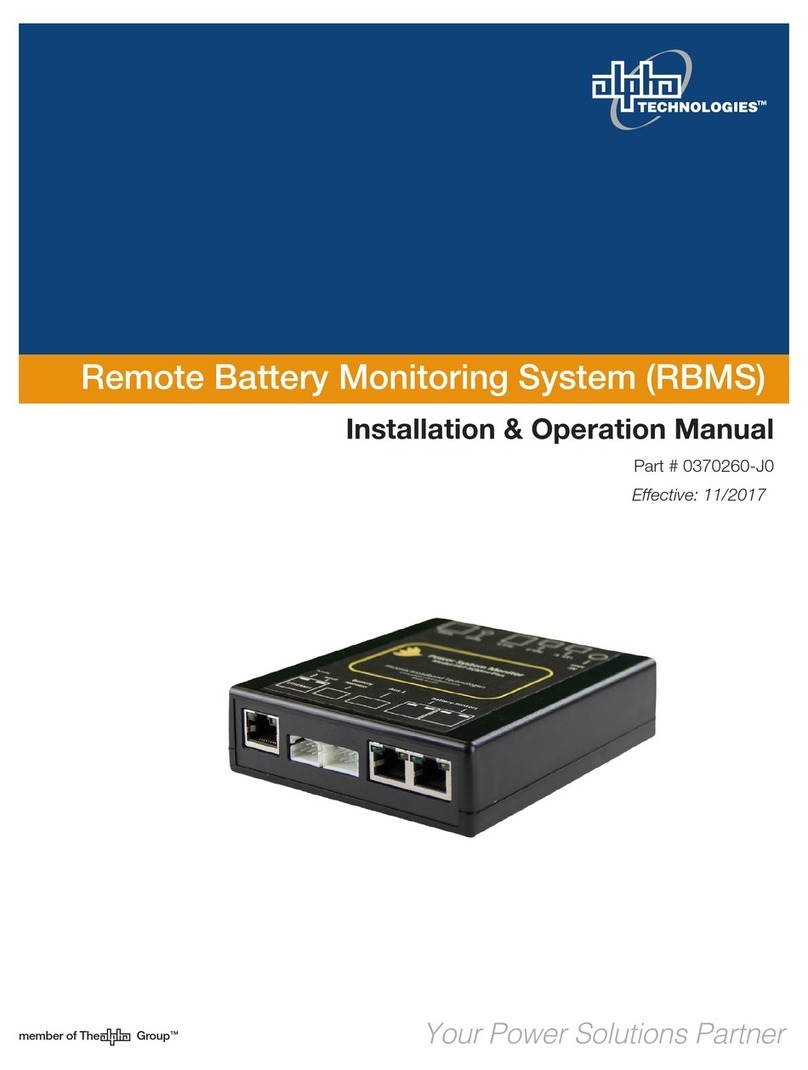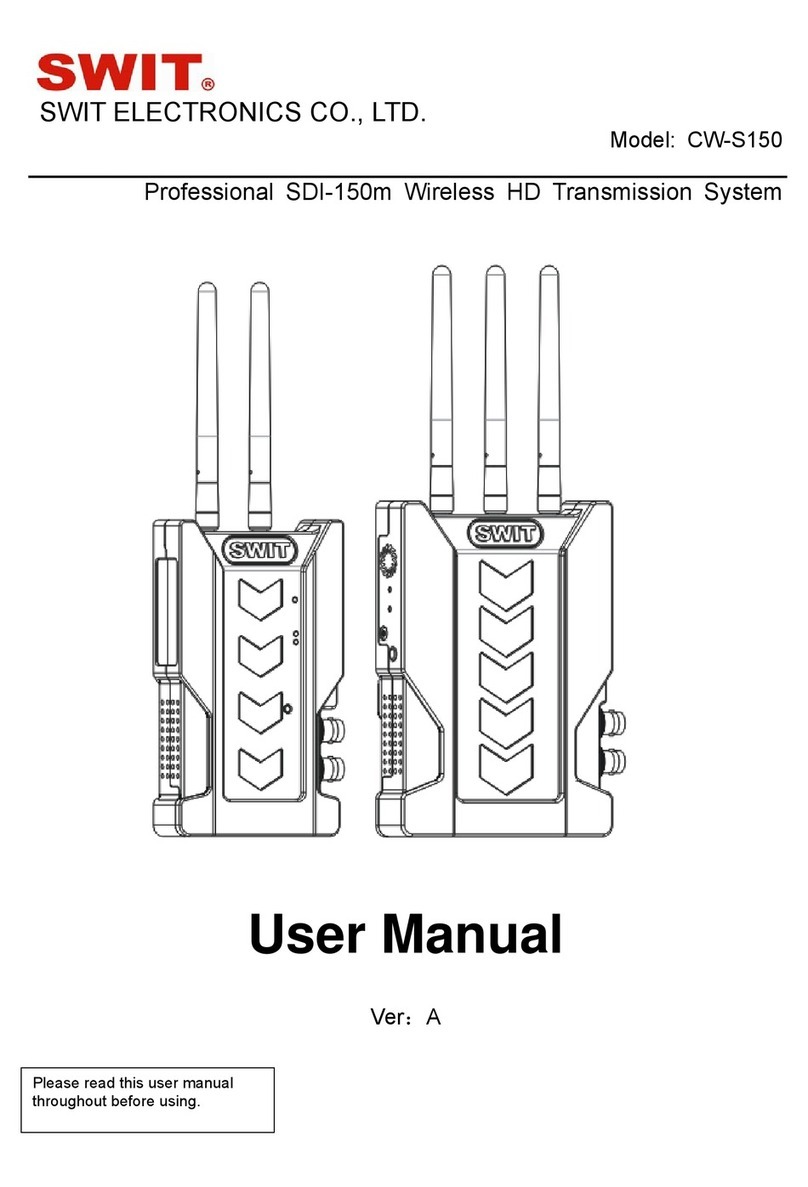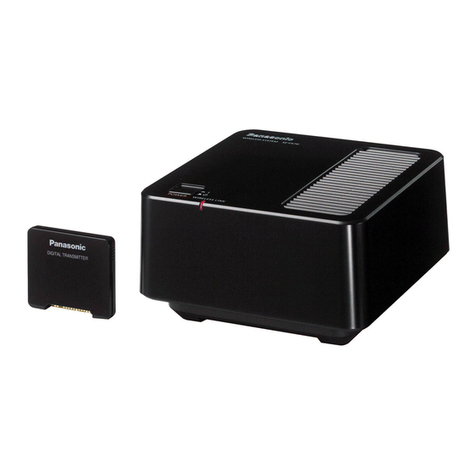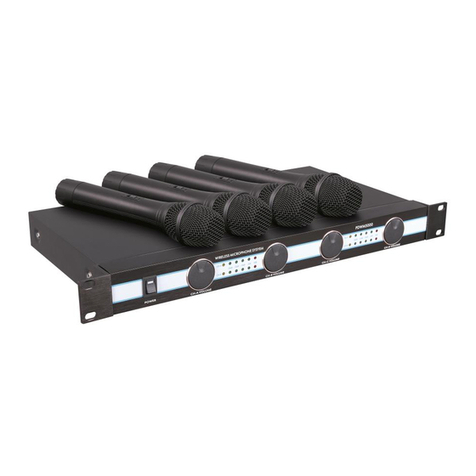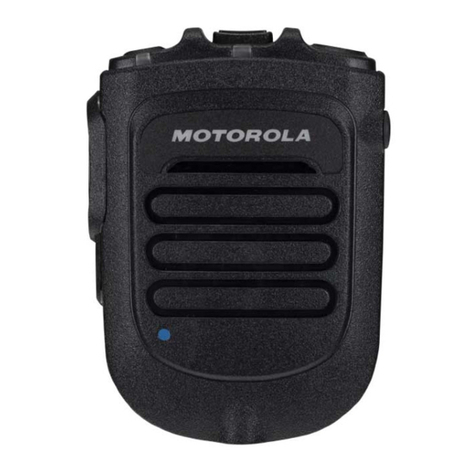5
WMU-216 Radio Micropho e
Setti g Up
Insert the supplied AA batteries into the transmitters by carefully unscrewin the base of the
handheld or openin the flap of the bodypack to reveal the battery compartment. Insert the batteries
(ensurin that + and - are the correct way round for each cell) and carefully replace the cover.
For neckband or lavalier microphones, connect the microphone lead into the bodypack, ensurin it is securely
pushed into the socket.
The receiver antenna may be connected directly to the BNC connector on the rear panel or
alternatively front-mounted onto rack ears.
If the receiver is to be rack-mounted, place the supplied rack ears a ainst each side of the receiver
and fix securely with 2 screws in each. These rack ears have a hole for front-mountin the antenna
and a BNC extension lead for fixin into the hole. This should be connected to the BNC on the rear
panel, creatin a front socket for the antenna to connect onto.
A choice of unbalanced 6.3mm jack or balanced XLR output is available on the rear panel of the
receiver. Connect the jack or XLR (optional) lead to the relevant output connector, turn down the
volume of any equipment (mixer, amplifier etc.) that the si nal will be fed into and then connect the
jack or XLR to the equipment.
Position the receiver within the best available line of si ht to the transmitters and connect the DC
jack of the supplied power adaptor to the receiver and the plu top to the mains outlet.
Operatio
Turn microphone levels down on the receiver and switch on power on the front panel of the receiver.
Each microphone needs settin up separately, see below for tunin information.
Take care not to point microphones towards speakers – this can cause dama in feedback
(loud whistle or howlin noise) – try to point microphones away from the speaker cabinets.
For the handheld version, move the switch on the handheld transmitter upward to switch it on and
the LCD display should li ht for a few seconds, showin the carrier frequency and battery status.
For the bodypack transmitter, press and hold the front on/off button until the display li hts up for a
few seconds, ensurin that the Mute switch is off. The displays will show the current carrier frequency
and battery status. The transmitter frequency should match the frequency on the receiver and each microphone
should be set to a different frequency. If not,see “Tunin ” below.
Gradually increase the microphone level on the receiver, then increase the volume on the mixer or
amplifier until the sound from each microphone can be heard throu h the equipment.
By Pressin the Mode button twice on the belt pack, you can set the input sensitivity of the transmitter. This
means you can connect devices with a different output level to the supplied microphone, or turn the level down
if the device is overloadin .
After pressin the button twice you will see the left hand bars flash on the screen. Usin the set button you can
select Line, Low, Medium, or Hi h sensitivity. Line bein the least sensitive.
Tu i g
Each microphone needs settin up separately, so switch one on at a time and follow the set up procedure, set
out below. You can use the same roup for both microphones, but a different channel frequency must be
selected for the individual microphones. You can set or reset the receivers and microphone transmitters in
any order, just work on one at a time. There is only one IR sensor on the receiver, hold the microphone
transmitters close to this for both channels.
The carrier frequency may be selected on the receiver unit by pressin the SET button, which

